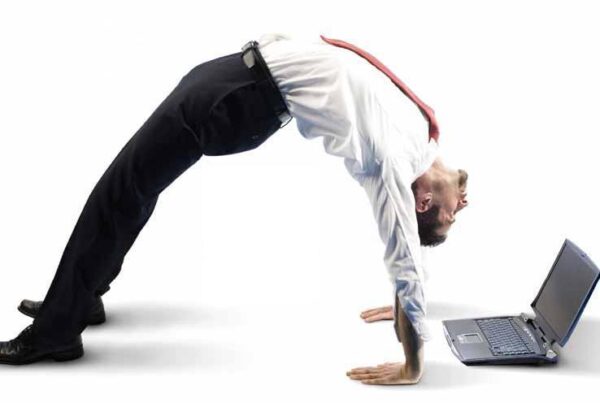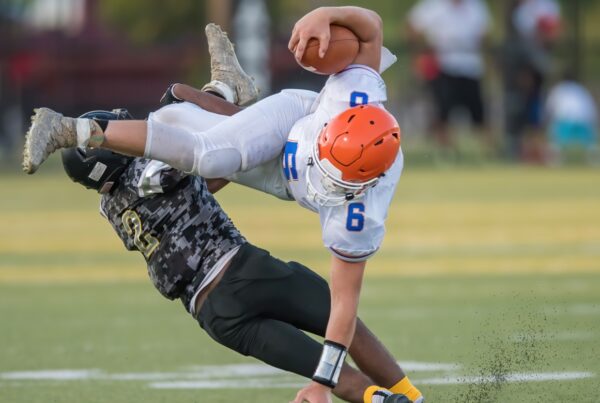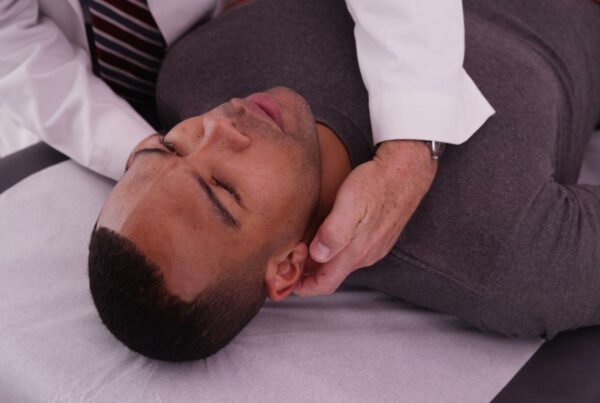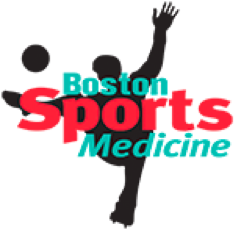By: Michael Geiger, PT, DPT, ITPT
In our most recent blog post in our concussion series, we introduced the idea of baseline measurements and the impact (no pun intended) they have on determining a patient’s trajectory towards recovery and returning to their regular activities. Today we will skip forward a bit in the process, beyond the rehab phase, and review some elements that are considered when bringing a patient back from concussion to return to school and eventually sport.
Anyone who has suffered from a concussion knows the difficulties one can have when returning to sport. However, what is often undervalued by the general public is that different aspects of daily life, especially for a school-aged athlete, can put just as much stress on the brain as returning to their sport. When we treat someone who has suffered a concussion, returning to school is a major factor we are considering for their rehabilitative journey. In fact, it is standard practice for providers treating patients with concussion to hold their return to sport until one can fully return to their academic setting, limiting their extracurricular activities to sub-threshold exercise at home or in a non-sport setting.
It has been shown that many post-concussive symptoms, including visual and auditory (hearing) deficits, are associated with academic performance declines. One study in 2015 found that 79% of patients experienced a reduction in academic performance following a concussion.1 This of course makes the process of returning to school sometimes just as difficult as getting back on to the field/court/ice.
In addition to the classic symptoms (headaches, nausea, dizziness), other signs and symptoms we will assess for, and that must be considered for the effect the concussion can have on academic performance include:
- Visual deficits
- Auditory deficits
- Concentration deficits
- Sleep disturbances
- Anxiety
Without addressing these, and properly modifying the return to school and sport timelines, one can prolong the time spent recovering from concussion. This can leave them at higher risk for re-injury while at the same time reduce their performance in school and in sport.
Many times, based on the patient’s presentation and once that person is cleared to return to school, modifications will be recommended to one’s learning setting to allow for a gradual adjustment back into the daily stress of school. In some cases, these can be simple, non-formal negotiations with a patient’s teachers/instructors to allow for accommodations in class. Some examples of these may be wearing sunglasses in class if one is experiencing light sensitivity. Another may be positioning one close to the classroom exit so he/she may leave class as needed if the stimulus of learning is provoking symptoms.
For those suffering longer term effects of the concussion, things such as a 504 plan or an IEP (Individualized Education Plan) can be designed to allow for other accommodations that allow the patient/student to have access to the material being taught but that will allow it to be delivered in a manner that reduces the symptom provoking nature of the classroom environment. Elements of these can be providing extra time for tests, delivering the material in different formats than is provided in class (hard copies vs online, visual vs audio, etc). Often, development of these plans will be a collaborative effort by the school and provider team (doctors, therapists, school athletic trainers, school nurses, and school administrators).
Once a person can get through a school day without increasing symptoms, they are often near the point of clearance to begin a graded return to their extracurricular sports or activities. The progression varies widely and is dependent on the provoking activities for the individual suffering from post-concussive symptoms. The basics of the stepwise return is that a person will start with light aerobic exercise below their symptom threshold, and if able to tolerate this will gradually re-engage with sport specific exercise. If contact is an innate element of their activity, that will be the last thing to be reintroduced.
Below is a popular example of a return to sport outline, developed by the Concussion in Sport Group (CISG), referred to as the Berlin progression:2
- Stage 1: Daily Activities at sub-symptom provoking level
- Stage 2: Light cardio activity without any resistance training
- Stage 3: Sport-specific exercises without any impact activities
- Stage 4: Non-Contact Training (interactive sport specific skills such as passing or shooting)
- Stage 5: Full Contact practices
- Stage 6: Return to Sport
TAKE HOME POINT
It has been shown that approximately 90% of concussions will recover within 4 weeks of injury when coupled with appropriate care and return to activity.3 There is obviously a lot to consider when returning to a normal routine after suffering from a concussion, and it can quickly become overwhelming – the last thing someone suffering an injury to their brain needs. Luckily, we here at BSM can help you navigate the winding road and get you back to what you love. If you suspect you or your child have suffered a concussion, give us a call to set up an appointment with one of our concussion specialists today!
P.S. — Be on the lookout for our future blog posts about other elements of concussions and what we can do to help you treat them!
References
- Williams R. M., Welch C. E., Parsons J. T., Valovich McLeod T. C. (2015) Athletic trainers’ familiarity with and perceptions of academic accommodations in secondary school athletes after sport-related concussion. Journal of Athletic Training 50(3): 262–269.
- McCrory P, Meeuwisse W, Dvorak J, et alConsensus statement on concussion in sport—the 5th international conference on concussion in sport held in Berlin, October 2016British Journal of Sports Medicine 2017;51:838-847.
- Centers for Disease Control and Prevention, National Center for Injury Prevention and Control. February 12, 2019. “What is a Concussion?” https://www.cdc.gov/headsup/basics/concussion_whatis.html.



